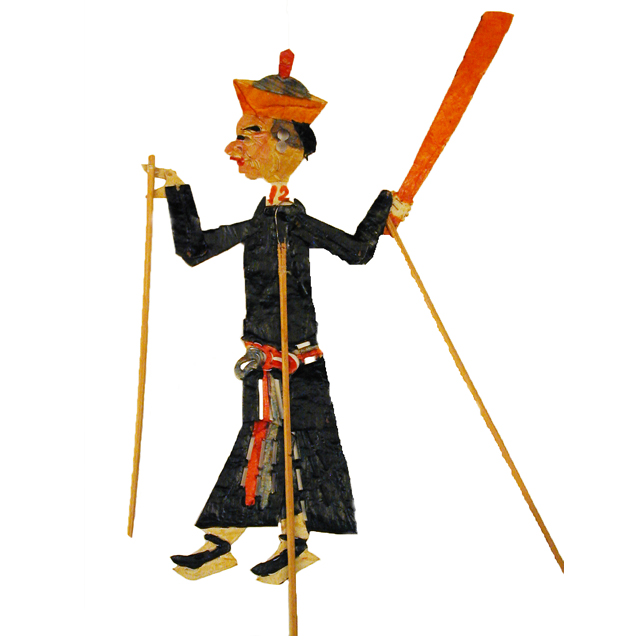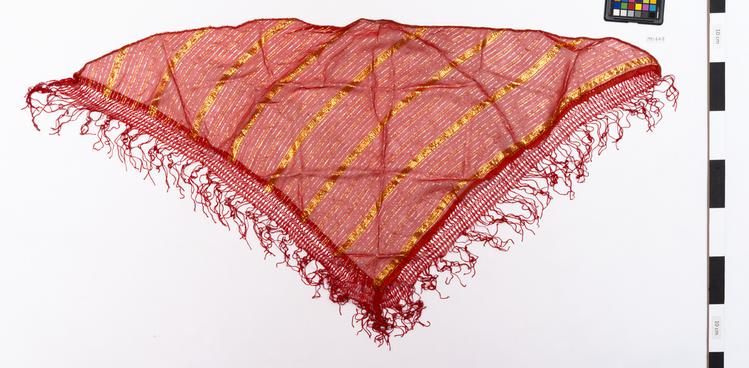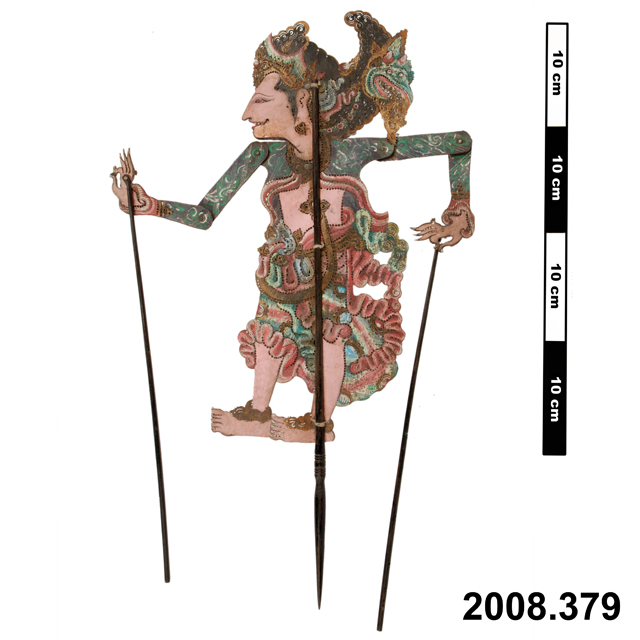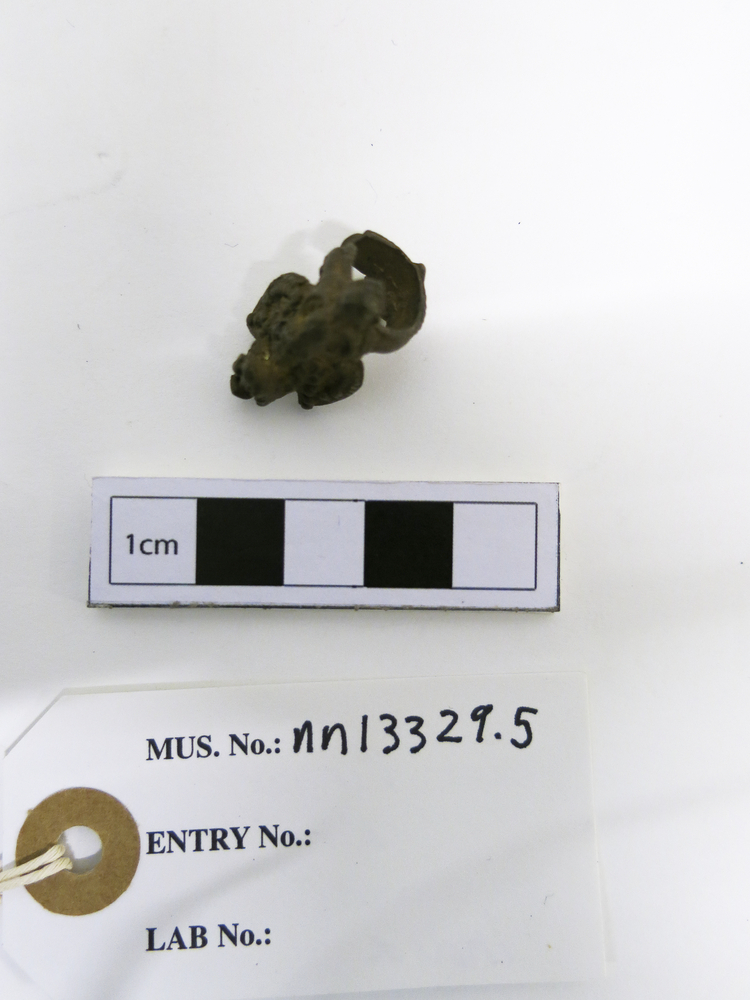
One of 29 shadow puppets telling the tale of the Tiger Story. This puppet represents a runner. He may have been one of the men who accompanied Li Len in searching for the tiger. He wears a hat with a blue dome and red up-turned rim and finial, long blue coat and multi-coloured tied belt. On one hand he carries a red baton. Three sticks are attached to his hands and body to enable the puppet to move.
The set of 29 shadow puppets with the accompanying script tell The Tiger Story. The collection was brought back to the UK by missionaries and bought by the Museum from the Church Missionary Society in 1955. The puppets include people, animals, furniture and spirits. The story tells of a tiger who ate the only son of an old woman, thereby depriving her of her only means of support. The old woman persuaded the local magistrate to issue an arrest warrant for the tiger. The task of catching the tiger was given to a man called Li Len, who accepted the responsibility whilst drunk. Despite searching the hills with hunters for a month, Li Len could not find the tiger. On his return, the magistrate beat him up and Li Len sought respite in the local temple. The tiger appeared there and taking pity on Li Len allowed himself to be captured. Before the magistrate, the tiger agreed to become a son to the old woman in return for his freedom. He visited the old woman daily, bringing her items of value which enabled her to live better than she had when her real son was alive. When she died, the tiger visited her grave and howled.






